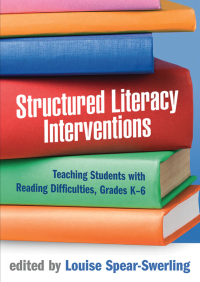In a MTSS framework, instruction is organized into 3 or 4 tiers. Tier 1 instruction — or high-quality, evidence-based classroom instruction — is the heart of the MTSS framework.
Strong Tier 1 instruction is the general instruction that all students receive from their classroom teacher.
Systematic, differentiated, and explicit
Tier 1 instruction relies on assessment data to screen for potential reading difficulties. Teachers can monitor student performance and adjust instruction. This data-driven approach allows teachers to identify areas where students are struggling and provide targeted supports as needed. During Tier 1 instruction, teachers use research-based teaching to deliver systematic instruction that is differentiated and explicit.
Systematic instruction means that the classroom teacher follows a sequential plan for introducing new topics and skills. Teachers review and build upon previous knowledge in a logical and cohesive manner. A teacher may need to break a topic or skill into a series of concrete steps to facilitate learning.
Explicit means the teacher directly explains the strategy or skill being taught to the students. Instruction includes the use of clear directions, demonstrations, concrete examples, plus plenty of opportunities to practice, review, and assess performance on what is being learned. Anita Archer and Charles Hughes describe explicit instruction as “systematic, direct, engaging, and success oriented.” You can see video examples of what this looks like in action for elementary students:Explicit Instruction: Effective and Efficient Teaching
Systematic and explicit instruction doesn’t mean that every student does the same thing at the same time. During Tier 1, teachers must differentiate instruction to meet the diverse needs within their classroom, including students with disabilities, English language learners, and students who may struggle behaviorally and academically.
4 ways to differentiate instruction
Differentiated instruction means we tailor the classroom to meet the assessed needs, interests, and abilities of each student. No two students are alike, and differentiated instruction means we meet students where they are to maximize learning.
Carol Tomlinson, a researcher who did groundbreaking work on differentiation, described four ways to differentiate instruction:
- Content: Adjusting a topic and resources based on what the students need to learn. For example: When teaching a unit on life cycles, you might bring in a text set written for different levels and interests.
- Process: Choosing tasks and strategies that help students make sense of their learning. For example: You might provide a graphic organizer for one small group to support their reading of a text while another group listens to the text read aloud.
- Projects: Giving students different types of assignments to demonstrate their learning. For example: You ask students to do a report by writing a summary, designing a narrated PowerPoint, or creating a book trailer with illustrations.
- Learning Environment: Designing a classroom that engages and supports learning. For example: You create flexible seating options so students can choose a preferred working space.
Learn more
A conversation with Dr. Tomlinson, published by the University of Virginia: Carol Tomlinson on Differentiation
In a MTSS framework, strong Tier 1 instruction is the foundation for learning to read. If a student fails a universal screening test or is unsuccessful with general classroom instruction, then additional support beyond Tier 1 may be needed. Tier 2 and Tier 3 interventions are available to help those students catch up to their peers in reading. Intervention is layered on top of the existing Tier 1 instruction, so students who need support receive a “double or even a triple dip” of reading instruction — intervention does not replace good Tier 1 classroom instruction!
Overall, Strong Tier 1 instruction is essential for ensuring that all students make progress learning how to read, write, and spell. By ensuring that Tier 1 offers the highest quality of instruction, schools can prevent the need for more intensive interventions later and ensure that all students can learn to read.
Reading 101
Reading and Writing Basics
Resources for planning systematic, explicit Tier 1 instruction
Curriculum and Instruction
16 Elements of Explicit Instruction
Great resources from other literacy organizations
- What Is Explicit Instruction? (Vanderbilt University): Explore the 16 elements of explicit instruction (Archer and Hughes, 2010), and examples for the classroom.
- University of Florida Literacy Institute (UFLI) : Lessons, instructional activities, materials, and tutorials to help teachers provide effective literacy instruction.
- Selecting Evidence-Based Practices for Tiers 1, 2, and 3 (Office of Elementary and Secondary Education, U.S. Department of Education): Guidance on navigating clearinghouses and databases to identify evidence-based practices.
- What Works Clearinghouse (Institute of Education Sciences, U.S. Department of Education): Searchable resources to help you find the information needed to make evidence-based decisions in your classrooms and schools.
- ELA Reports (EdReports): Free reviews of K-12 instructional materials. Evidence-rich, comprehensive information about a program’s alignment to the standards and other indicators of quality.
Books for educators






